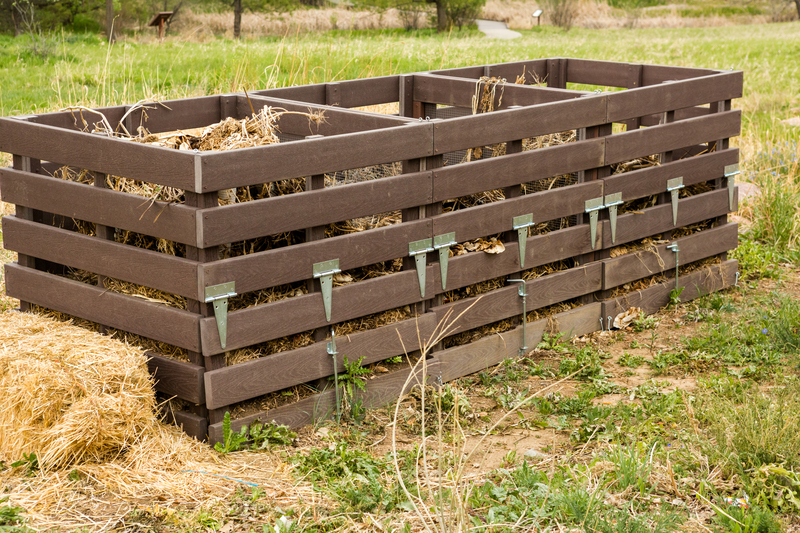Collaborative Recycling Efforts to Transform Schools: An In-depth Guide
Recycling is no longer just an environmental buzzword but a critical component of sustainable living. Schools stand as influential establishments in shaping a green future. Collaborative recycling efforts in educational institutions can revolutionize not only campus life but the mindset of generations to come.
Why Focus on School Recycling Initiatives?
Schools generate significant waste each year--from paper and plastics to electronics and food. By instituting effective school-wide recycling programs, educational institutions set a prime example for communities and empower students with environmental stewardship. Moreover, cooperative recycling activities foster a sense of responsibility and teamwork among students, staff, and parents, making sustainability a shared value.
Key Benefits of Collaborative Recycling in Schools
- Environmental Impact: Reduces landfill waste, lowers carbon emissions, and conserves resources.
- Educational Value: Instills practical knowledge and environmental ethics in students.
- Cost Savings: Decreases waste management expenses and promotes efficient resource use.
- Community Engagement: Brings together parents, teachers, students, and local businesses for a common cause.
- Increased Awareness: Raises consciousness about local and global environmental issues.

The Importance of Teamwork in School Recycling Programs
Collaborative school recycling efforts are more effective than isolated attempts. By involving the entire school community, from students to staff and parents to local businesses, recycling initiatives gain momentum and impact. *Teamwork ensures the continuity, efficiency, and longevity of recycling projects in schools,* making green practices a core part of educational culture.
Strategies for Building Collaborative Recycling Programs in Schools
Transforming schools into recycling champions requires a structured approach. Here are some proven strategies:
1. Form Green Committees
Create a Green Team consisting of students, teachers, custodial staff, and parent volunteers. This team coordinates recycling projects, tracks progress, and motivates participation across the school.
2. Set Clear and Achievable Goals
Define measurable objectives such as reducing paper waste by 50% or increasing plastic recycling by 30%. Setting targets makes it easier to monitor success and provides motivation.
3. Educational Workshops and Campaigns
Empower students and staff with knowledge. Organize workshops focusing on the importance of recycling, how to segregate waste, and the global impact of local actions. Visual campaigns and assemblies can help reinforce these messages.
4. Integrate Recycling with Curriculum
Incorporate environmental education into lessons--whether it's science, geography, or social studies. Allow students to undertake recycling-related projects, conduct research, or start awareness campaigns.
5. Enhance School Infrastructure
Ensure the presence of clearly labeled recycling bins in classrooms, cafeterias, and playgrounds. Educational posters and color codes around bins assist in proper sorting, reducing contamination, and boosting participation in school recycling programs.
6. Foster Partnerships with Local Businesses and Authorities
Collaborate with municipal recycling agencies and eco-friendly businesses for collection, processing, and funding. Such partnerships amplify the impact of collaborative school recycling efforts and create opportunities for real-world learning. Consider involving local artists to build sculptures from recycled materials, or businesses to donate recycling containers.
7. Celebrate Successes and Offer Incentives
Recognize classrooms, students, or staff who go the extra mile with "Green Champion" awards or eco-friendly gifts. Display achievements on the school website and newsletters to maintain momentum.
Case Studies: Successful Cooperative Recycling Projects in Schools
Across the globe, real-life examples prove that collaborative recycling initiatives in schools are both practical and impactful.
- Eco Schools Program, United Kingdom: This accredited framework enables pupils, teachers, and parents to work together on environmental projects, with recycling at the core. Participating schools see measurable reductions in waste and increased recycling rates, earning "Green Flag" status.
- Zero-Waste Schools Initiative, Japan: Students in Japanese schools conduct regular waste audits, lead classroom recycling stations, and organize community e-waste drives. Teachers integrate recycling education into science and civic lessons, making sustainability systemic.
- Recycling Champions Program, United States: In several U.S. school districts, students act as recycling leaders, teaching peers about proper waste segregation and overseeing bin maintenance. Schools collaborate with local waste management firms for regular pickups and provide metrics on recycling success.
Main Components of an Effective School Recycling Collaboration
Building a comprehensive school recycling initiative relies on several interconnected elements:
- Leadership: A committed team to drive efforts and inspire participation.
- Inclusion: Involve every stakeholder from the outset--students, staff, parents, and community.
- Communication: Regular updates through assemblies, newsletters, and social media.
- Resources: Provide sufficient recycling bins, educational materials, and funding.
- Feedback Loops: Monitor progress, collect data, and share results to pinpoint areas for improvement.
The Role of Technology in School Recycling
Modern technology enhances collaborative recycling in schools through digital tools and innovative processes. Schools utilize:
- Recycling tracking apps for students and staff to record waste diverted.
- Online platforms to organize recycling competitions and share resources.
- Data dashboards for visualizing progress.
- Smart recycling bins that notify staff when full or automatically sort materials.
Implementing technology not only streamlines coordination but also makes recycling more engaging, especially for digital-native students.
Addressing Challenges in Collaborative School Recycling
Launching and maintaining school recycling cooperation efforts comes with its hurdles. Common issues include:
- Contamination: Incorrect items in bins can undermine recycling processes. Continual education and clear labeling are vital.
- Lack of Engagement: Motivation can wane if the benefits are not communicated. Regular updates and incentives help keep interest high.
- Resource Constraints: Not all schools have funding for extra bins or staff. Reach out to local councils and businesses for support or donations.
- Logistical Barriers: Collection and processing may be difficult in rural areas. Partner with specialized recyclers or develop creative solutions like community drop-off points.
Sustainable Solutions to Overcome Obstacles
- Interactive Training: Regular, engaging training sessions for students and staff can greatly decrease bin contamination rates. Role-play and recycling games make these lessons stick.
- Student Empowerment: Give students ownership of projects. Appoint "Recycling Rangers" to monitor bins and lead awareness drives, turning participation into a point of pride.
- Grant Applications: Seek eco-grants from environmental organizations, government bodies, or large companies to obtain funding for resources and infrastructure.
- Parent Engagement: Reach parents via newsletters, emails, and school events, encouraging matching recycling efforts at home and fostering community-wide change.

Future Trends in School Recycling Collaboration
The landscape of school recycling jointly evolves with advancements in technology, curriculum, and community partnerships. Upcoming trends include:
- Comprehensive Waste Audits: Using data analytics and student participation to identify major waste streams and tailor recycling strategies accordingly.
- Circular Economy Education: Teaching students not just to recycle, but to rethink product life cycles and embrace repair and reuse.
- Eco-Design Projects: Encouraging product design classes to create items from recycled materials, stimulating innovation and sustainability-minded creativity.
- Global Partnerships: Creating virtual exchanges with schools worldwide to share success stories, challenges, and solutions in collaborative recycling.
How to Get Started: Steps for Any School
If your school is ready to embark on a path of collaborative recycling transformation, follow these essential steps:
- Assess the Current Situation: Perform a waste audit to determine key sources and volumes of waste.
- Gather a Dedicated Team: Form a green committee of students, teachers, custodial staff, and parents.
- Set Goals and Milestones: Choose realistic metrics for improvement and establish a timeline.
- Educate and Engage: Leverage assemblies, workshops, and digital platforms to spread awareness.
- Upgrade Infrastructure: Place well-labeled bins in accessible locations and establish a collection routine.
- Collaborate with Stakeholders: Reach out to local businesses, recycling agencies, and municipal bodies for resources and guidance.
- Track Progress: Record data, celebrate successes, and issue regular reports to the school community.
- Review and Adapt: Seek feedback, tackle challenges, and refine your approach for continuous improvement.
Conclusion: Schools as Catalysts for Circular Change
Collaborative recycling efforts have the power to transform schools into champions of sustainability, shaping environmentally conscious citizens of the future. By harnessing teamwork, education, and strategic partnerships, educational communities can drastically reduce their environmental footprint and inspire lifelong eco-friendly behaviors.
Whether your institution is taking its first steps into recycling collaboration or looking to upgrade an existing program, the future is bright. Ultimately, collaborative recycling in schools is not just about managing waste but nurturing a culture of environmental innovation and active citizenship.
Together, we can make every campus cleaner, greener, and a beacon of sustainable progress for generations to follow.